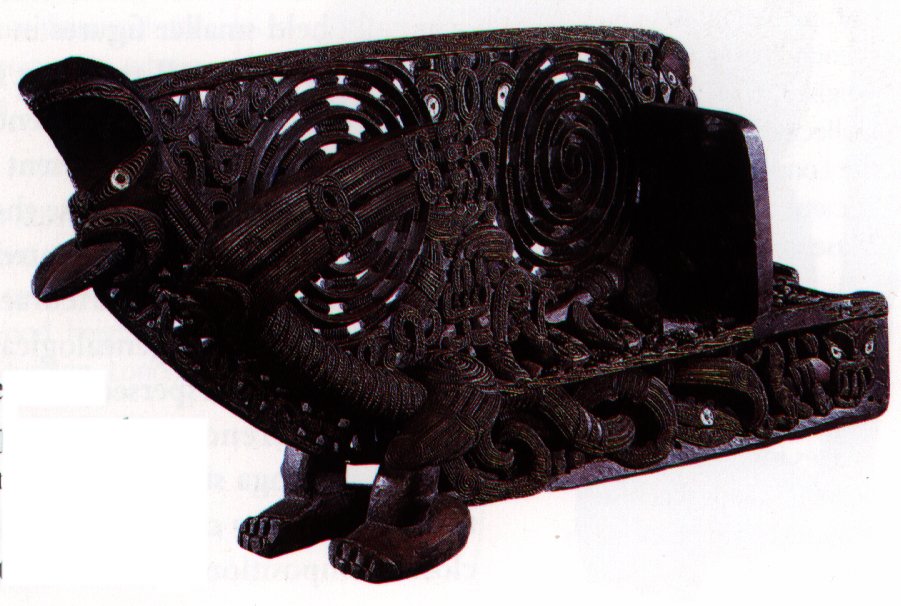|
"The pantheon of creator gods, the spirits of deified ancestors, and the adventures of legendary, semi-divine heroes are central to spiritual life in Polynesia.
Extant figures of gods and deified ancestors often bear scant resemblance to their original presentation, for they were frequently wrapped in barkcloth and ornamented with tufts of feathers as a sign of their tapu or sacred, restricted status.
Some figures were kept hidden in god houses, or, in the case of ancestral spirits, in the homes of lineage heads; others were displayed prominently in temples.
Many of the figures are richly layered in meaning, referring both iconographically and stylistically to concepts of power, history, time and space, the land, gods, and ancestors.
These multiple-allusions may be expressed by the concept of kaona [taoga], a Hawaiian word that means 'veiled meaning or symbolism', which is a well-known feature of poetry, music, and dance."
"All Polynesian cultures share a concern not only with their own genealogy and history, but also with understanding the nature of the creation of the earth and the beginning of time.
Appropriately, given the mana of war canoes, the stern and prow ornaments depicted central themes in Maori cosmogony. Many prows depict the creation of the earth and sky.
The openwork spirals on the main panel may represent the entry of light and knowledge into the world when the god Tane separated his parents Papatuanuku and Rangi, Earth Mother and Sky Father.
The foremost figure depicts a male with aggressively protruding tongue. He may represent Tuumatauenga, the god of war and man."
(D'Alleva) |
